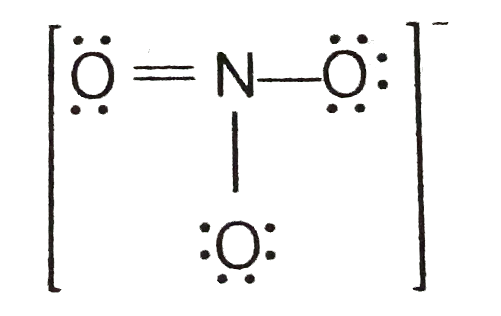What is a lone pair?
Step-by-Step Text Solution
1. Definition of Lone Pair: A lone pair refers to a pair of valence electrons that are not involved in bonding with other atoms. These electrons are localized on a single atom and do not participate in the formation of chemical bonds.
2. Example of Lone Pair in Ammonia (NH3): To understand the concept of a lone pair better, we can look at the example of ammonia (NH3).
3. Valence Electrons of Nitrogen and Hydrogen:
- Nitrogen has 5 valence electrons.
- Each hydrogen atom has 1 valence electron.
4. Lewis Dot Structure of Ammonia:
- In the Lewis dot structure of ammonia, nitrogen is at the center, surrounded by three hydrogen atoms.
- Nitrogen shares one electron with each hydrogen atom, forming three covalent bonds.
5. Counting Electrons Used:
- In forming these bonds, nitrogen uses 3 of its 5 valence electrons (one for each bond with hydrogen).
6. Identifying Lone Pair Electrons:
- After forming bonds with the three hydrogen atoms, nitrogen has 2 valence electrons remaining.
- These remaining 2 electrons are not involved in bonding and are placed as a pair on the nitrogen atom.
7. Conclusion:
- The pair of electrons that remain on nitrogen and do not participate in bonding is referred to as a lone pair.
- Therefore, in ammonia (NH3), nitrogen has one lone pair of electrons.
- Nitrogen has 5 valence electrons.
- Each hydrogen atom has 1 valence electron.
- In the Lewis dot structure of ammonia, nitrogen is at the center, surrounded by three hydrogen atoms.
- Nitrogen shares one electron with each hydrogen atom, forming three covalent bonds.
- In forming these bonds, nitrogen uses 3 of its 5 valence electrons (one for each bond with hydrogen).
- After forming bonds with the three hydrogen atoms, nitrogen has 2 valence electrons remaining.
- These remaining 2 electrons are not involved in bonding and are placed as a pair on the nitrogen atom.
- The pair of electrons that remain on nitrogen and do not participate in bonding is referred to as a lone pair.
- Therefore, in ammonia (NH3), nitrogen has one lone pair of electrons.
Similar Questions
Knowledge Check
- Question 1 - Select One
The oxyacid of sulphur that contains a lone pair of electrons in sulphur is
ASulphurous acidBSulphuric acidCPeroxodisulphuric acidDpyrosulphuric acid - Question 2 - Select One
In NO−3 ion, the number of bond pairs and lone pairs of electrons on nitrogen atom are
Thinking process
To solve this sequence we must know the structure of NO−3 ion i.e,

Then, cound the bond pairs and lone pairs of electron on nitrogen.A2,2B3,1C1,3D4,0
In OF2, the number of bond pairs and lone pairs of electrons are respectively,
View SolutionWhich of the following species / molecules does not have same number of bond pairs and lone pairs ?
View SolutionIn NO−3 ion, the number of bond pairs and lone pairs of electrons on nitrogen atom are
Thinking process
To solve this sequence we must know the structure of NO−3 ion i.e,

Then, cound the bond pairs and lone pairs of electron on nitrogen.View SolutionThe number of bond pairs is X and lone pairs is Y on Xe (central atom) in XeO3F2. What is the sum of X+Y?
View SolutionWhich of the following species has four lone pair of electron..
View SolutionGive reasons for the following:
A molecule of ammonia has one lone pair of electrons.View Solution

